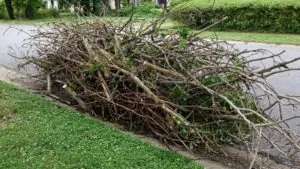HALF PRICE SALE ON EVERYTHING ENDS ON FRIDAY
NEW SEASON BARE ROOTS AT 50% OFF LAST SEASONS PRICES – ENDS 31 JULY
***TODAY ONLY – GET AN EXTRA 10% OFF SALE PRICES WITH CODE FLASH10***
Menu
HALF PRICE SALE ON EVERYTHING ENDS ON FRIDAY
NEW SEASON BARE ROOTS AT 50% OFF LAST SEASONS PRICES – ENDS 31 JULY
***TODAY ONLY – GET AN EXTRA 10% OFF SALE PRICES WITH CODE FLASH10***
 https://www.hopesgrovenurseries.co.uk/wp-content/uploads/2018/01/cherry-wild-fruit-750x552.jpg
Wild cherry fruits Prunus avium
https://www.hopesgrovenurseries.co.uk/wp-content/uploads/2018/01/cherry-wild-fruit-750x552.jpg
Wild cherry fruits Prunus avium

There are fewer more rewarding things than eating delicious fruit produced in your own garden from trees that you have carefully planted and grown. A major part of yielding quality, flavourful fruit comes from pruning. This is an important skill and can be the difference between growing fruit that is ripe, ravishing and resplendent and growing fruit that is rubbish, rank and rotten.
Pruning is carried out for the health of the plant. During pruning, dead, damaged and diseased branches are removed to prevent insect and decay organisms from entering the tree. Disease can spread fast and stop the tree from growing and producing fruit. Trees that are not pruned become less productive and congested with old branches. By removing poorly growing branches you make the tree more efficient by focusing its energy on the healthy branches that remain, making it grow more vigorously and produce better quality fruit.

In a cold climate like the UK’s, fruit trees should be pruned in the winter when they are dormant between leaf fall and bud burst, this is typically between November and early March, though closer to the end of winter is preferable. This is because in the early winter there is little branch growth and the tree cannot heal the wounds caused by pruning cuts.
Whereas in late winter you are closer to early spring when your fruit tree will release its stored energy and heal those wounds. Furthermore, by pruning during this period you can see your trees complete structure, making it easier to see where work needs to be done.
It is important to get your secateurs sharp before pruning, as blunt tools can cause branches to tear which can lead to wounds on the tree attracting disease; while larger branches can be tackled with ease by using a pruning saw.
Begin by removing any dead, damaged, and diseased branches. Then get rid of branches that are crossing and rubbing, as badly positioned branches can be damaged in the wind as they rub against each other, creating a point of entry for infection that can spread to healthy branches. Removing these lacklustre and poorly placed branches focuses the energy of your tree into producing stronger and better placed branches.

Next, shorten the previous year’s growth on each main branch by about a third to a bud facing in the required direction. This will both encourage the development of new branches and help the tree maintain a good shape. Leave side shoots should only be pruned if they are crossing or if growth is too crowded, otherwise these lateral shoots should be left unpruned so they can develop fruit buds in the second year. Remove strong shoots that are growing towards the centre of the tree.
One older trees, remove or thin out any spurs that have become overcrowded. Spurs are the stubby and short side stems that protrude from the main stem on woody plants that are usually in their second year; the fruit of pears and apples form on the spur of the tree. Thinning out the spurs will allow more light to reach developing fruit, improving its growth and flavour.
Almost all apples, pears, plums and cherries can be grown successfully in the UK, while fruits requiring hotter continental climates such as apricots, peaches, and nectarines are also possible in southern England.
| Fruit Tree | Years to Fruit |
| Apple Trees | 2-5 years |
| Pear Trees | 4-6 years |
| Plum Trees | 3-6 years |
| Cherry Trees | 3-7 years |
| Apricot Trees | 2-5 years |
| Peach Trees | 2-4 years |
| Nectarine Trees | 2-4 years |
Carefully removing branches and stalks at the correct time, in a correct manner will reduce the chance of future problems and increase the chance of getting delicious fruit that blooms in season!
Many of our customers buy topiary plants (and hedging plants) to grow in containers, one frequently asked question is how large does the pot that I plant them into need to be?
Expert horticultural advice on the merits and pitfalls of planting bare root yews, and how to get the best from them.
Pleached trees are a garden-design favourite, because they provide an instant leafy screen that looks stylish as soon as it’s planted. They offer privacy for you and they help to muffle noise and that’s becoming more important in our busy world. They provide a living screen that’s far more eco-friendly than a stark wooden fence…